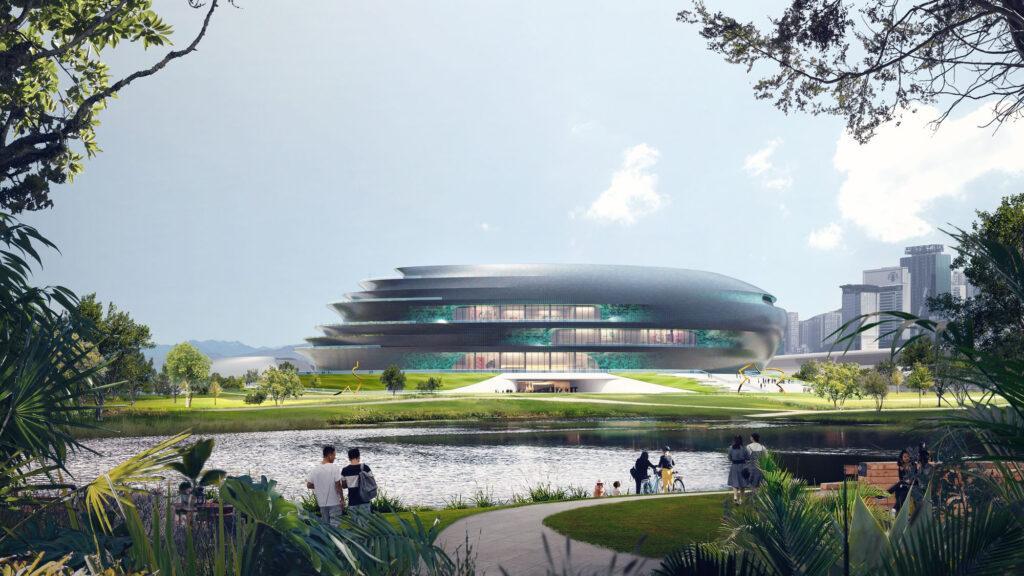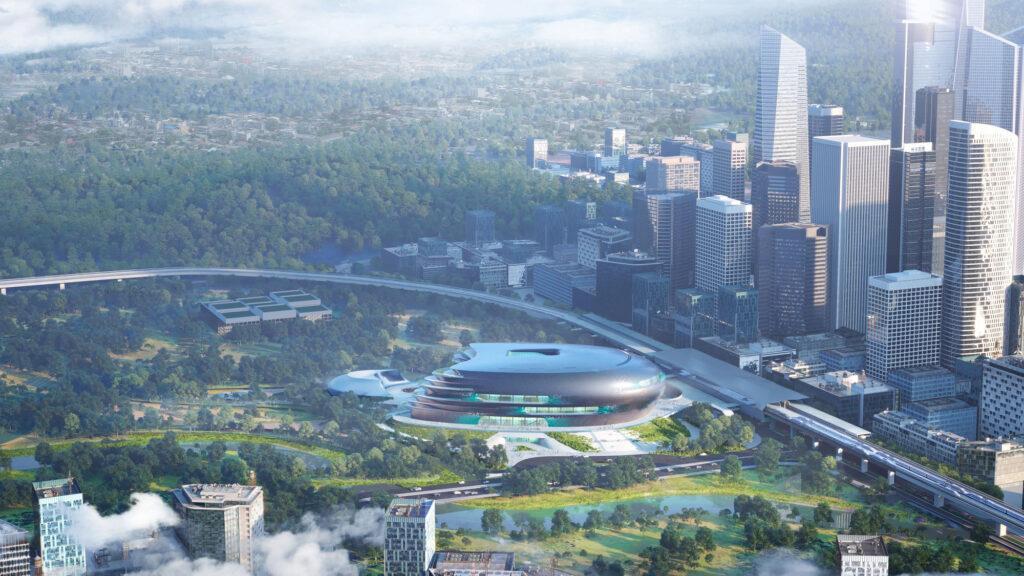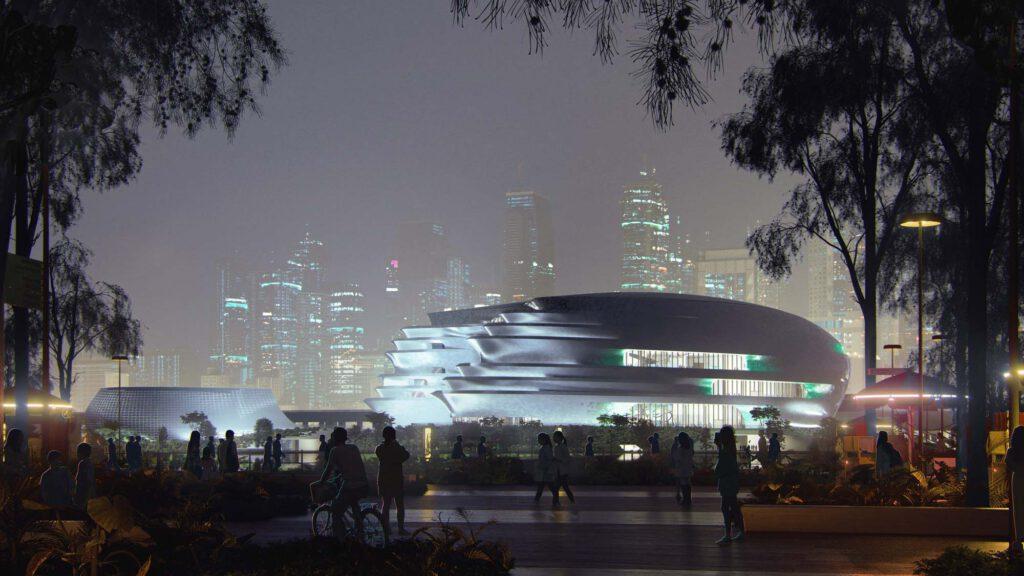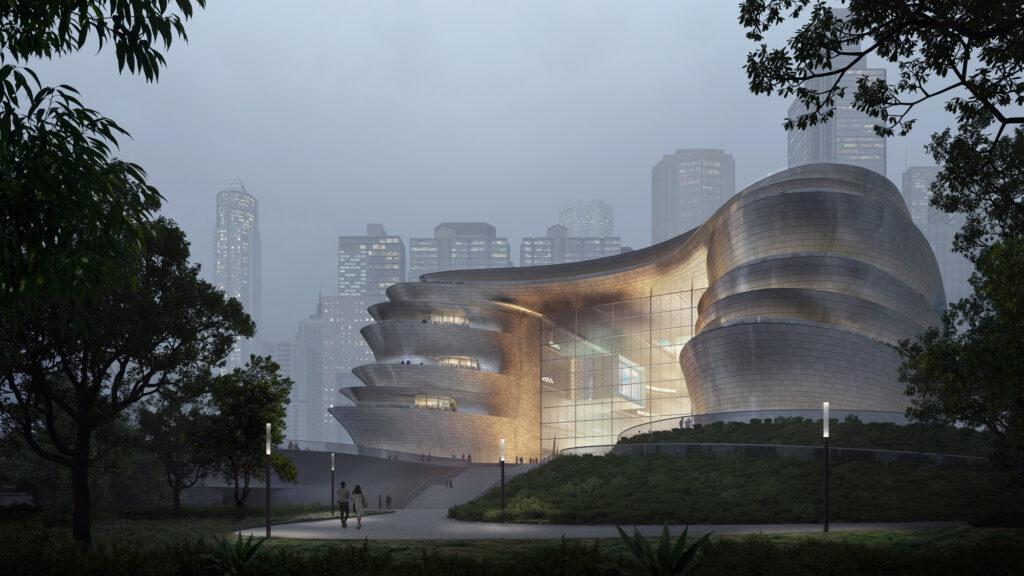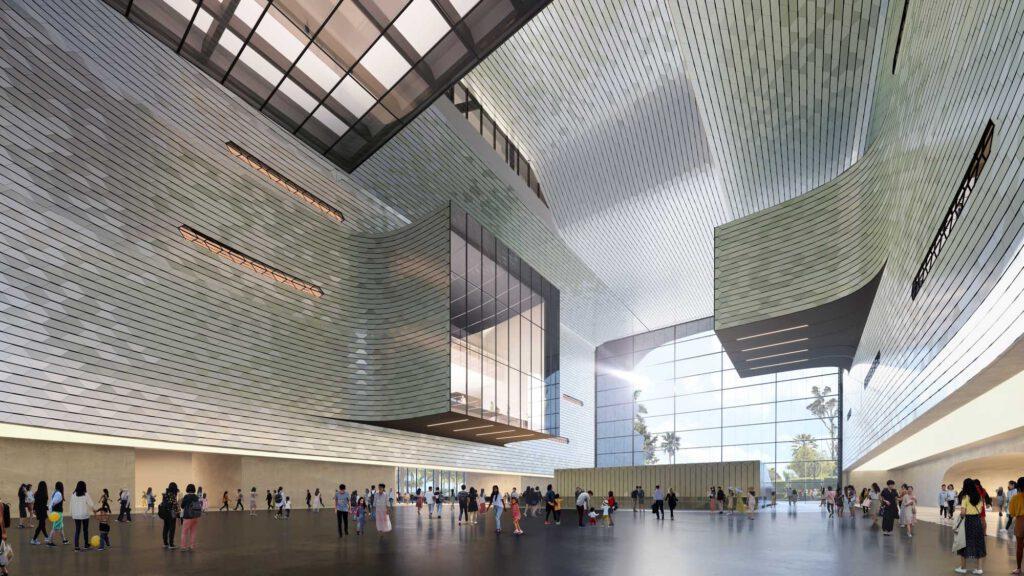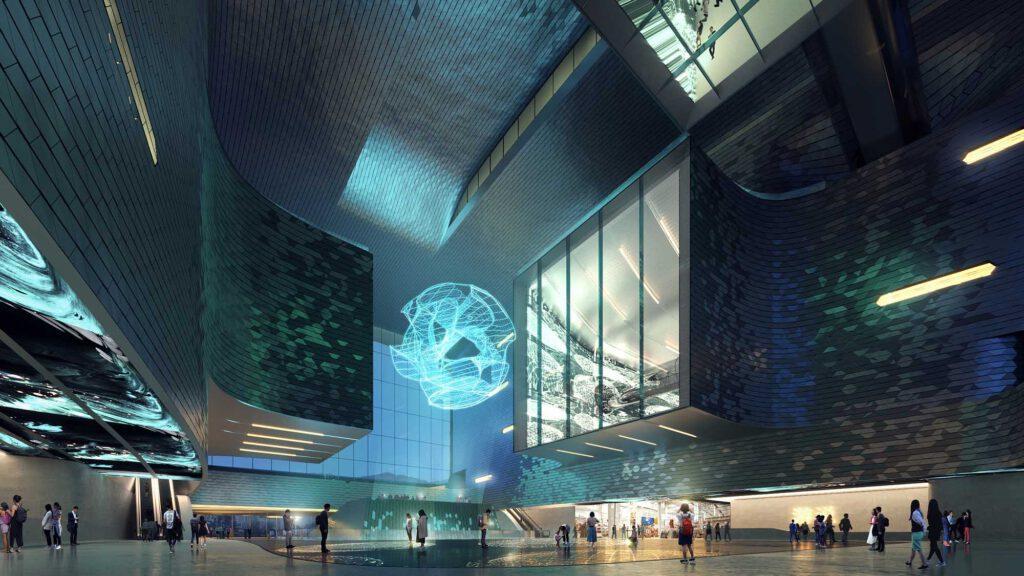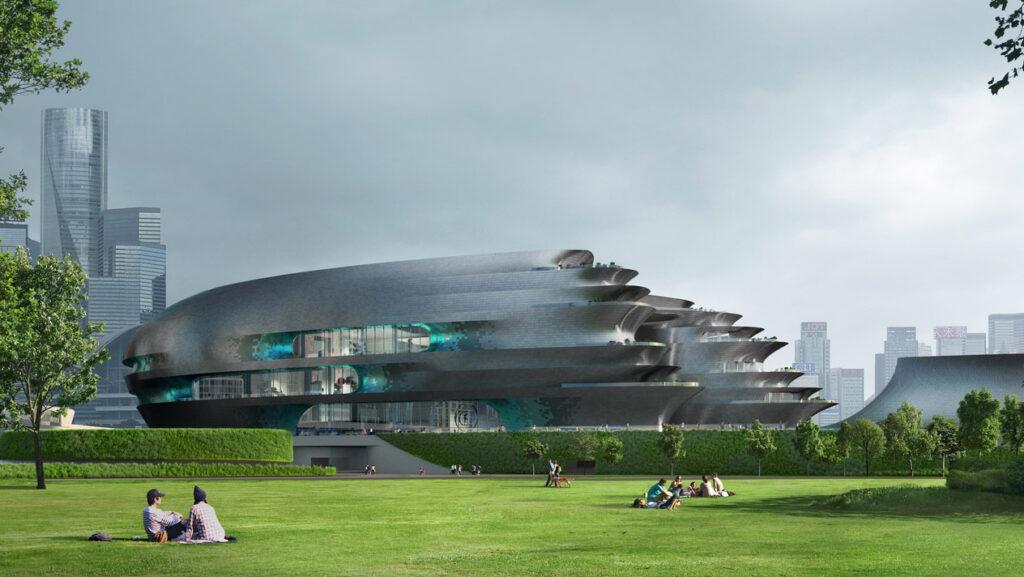Museum in a wind tunnel
Building the Science & Technology Museum in Shenzhen calls for a serious amount of expertise. Judging from the plans unveiled by Zaha Hadid Architects, they have exactly what is needed.
Right now, it’s safe to say that hardly any other city in the world is as focused on modern urban development as Shenzhen. The city, which is home to 12 million people and links Hong Kong with the Chinese mainland, announces new plans and visions with impressive regularity. And most impressive of all is that the projects are all sustainable.
Zaha Hadid Architects raise the bar
The plans for the Science & Technology Museum by Zaha Hadid Architects are no exception. The leading architecture studio claims that it will be “a benchmark for sustainability”. Even at the earliest development stages of this gigantic project, the team used unusual strategies to ensure that it delivered on this front. More on that later.
But first let’s take a look at what Zaha Hadid Architects have just unveiled to the general public. A 125,000 m² complex which, when looked at head on, generally calls to mind an outsized pebble – an optical impression generated by cascades of asymmetrical terraces.
Intuitive guide system
But from above, the complex’s U-shaped floor plan is clearly visible. And the oversized glass front is a deliberate eyecatcher designed to send future visitors automatically to the entrance portal.
When planning the museum interior, Zaha Hadid Architects made a point of ensuring that visitors would be able to find their way around the building intuitively. This, according to experts, is due largely to the U-shaped floor plan. As well as this, the structure consists of a progression of interlinked rooms, all of which will have different uses based on their own logic. As galleries, of course. But also as places of education.
All areas are additionally to be grouped centrally around an inviting atrium courtyard. In doing so, Zaha Hadid Architects wished to create a particular kind of adaptability. In other words, it will be instinctively clear which areas are to remain exactly as they are. And which ones will change constantly with each rotating exhibition.
More than architecture
In any case, the team sees this building as far more than just an architectural project. Rather, they want to help – in their capacity as planners – to educate people: “The museum will be a key destination to learn and explore the power of science and technology and understand their impact on our life and future,” explain Zaha Hadid Architects. Which means that it is only natural for this museum to serve as a link between universities, schools and international innovation centres.
The museum will be a key destination to learn and explore the power of science and technology and understand their impact on our life and future.
Zaha Hadid Architects
To illustrate this idea, large glass surfaces were integrated on the long sides of the museum. This is to allow passers-by to gain a little insight into the world of science without even having to set foot in the museum …
Meticulous attention to detail
It is clear just how important it is for the planning team – led by Zaha Hadid’s successor Patrik Schumacher – to adhere to the overriding Science & Technology theme right down to the very last detail. And, as mentioned earlier, to do so by harnessing state-of-the-art technology: for example, by using computer modelling to determine the thermal performance of each new detail and to ensure full use is made of natural lighting.
And as if that weren’t enough, they produced scaled 3D prints to subject the building shell to wind tunnel testing under prevailing wind conditions and to gauge the resulting air quality.
Zaha Hadid Architects: “In this way, we also collected data that is used to reduce energy consumption. But at the same time, we were able to enhance visitor comfort beforehand and to protect the artworks in the museum even more effectively.”
Focus on climatic conditions
At the end of the day, the building responds to the region’s climate with a design that expertly factors in its subtropical conditions. This means: High thermal insulation. Highly efficient glazing systems. Intelligent lighting and building management systems. In addition, the way the building materials for the museum are sourced has been optimized by database systems with a view to minimizing the carbon footprint.
This is so that the building will qualify for the top 3-star rating awarded by the Chinese Green Building Evaluation Standard, which was the only reason that the city administration allowed building work to go ahead. And if everything is to be completed on schedule, the same unswerving focus that the architects applied to their conceptual brief will be needed for the construction phase. After all, the Science & Technology Museum is scheduled to open by the end of 2023.
Text: Johannes Stühlinger
Translation: Rosemary Bridger-Lippe
Images: Zaha Hadid Architects
